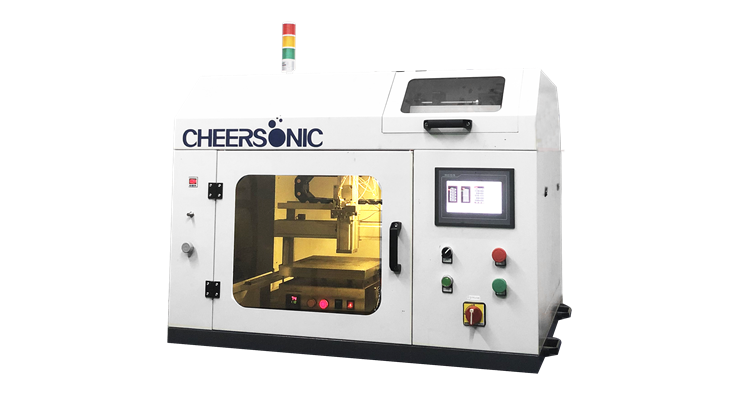Ultrasonic Spraying Of Catalyst In DMFC
Maximizing the catalyst in the DMFC by ultrasonic spray coating
Different types of fuel cells will choose various and suitable catalysts according to the electrochemical reactions that occur to improve the conversion efficiency of the fuel cell. Fuel Cell Store has more than 100+ catalytic materials in its inventory (a partial list of them provided here) and has the know-how for fabricating various membrane electrode assemblies (MEAs) or catalyst coated membranes (CCMs).
Membrane Electrode Assembly (MEA) is the most important component in fuel cell devices. Electrodes composing MEA greatly determine the performance and durability of its application in passive Direct Methanol Fuel Cell (DMFC). Fabrication and characterization of electrodes with various loading Pt-Ru/C catalysts and their application to DMFC have been carried out.
One of the factors limiting direct methanol fuel cells (DMFC) performance is the slow kinetics of methanol oxidation at the anode. The importance of the catalyst support for fuel cells has been recognized and different forms of carbon have been suggested.
Several methods for loading of Pt-Ni binary catalysts on the CNT were tested. Using the CNT treated HNO3, the catalysts supported Pt, Ni separately (Pt&Ni/CNT) and Pt-Ni alloy (Pt- Ni/CNT) were made respectively. The results of supporting were confirmed by TEM and XRD analysis. TEM images show that metal catalysts were loaded uniformly and finely on the CNT. By XRD analysis, the peaks of Pt&Ni/CNT displayed Pt and Ni peaks respectively. Also it was found that the peaks of Pt were shifted to the higher 2theta angle in X-ray diffraction pattern which indicated that Pt-Ni alloy was formed successfully(Pt-Ni/CNT). In addition, electrochemical tests for cathode catalysts of DMFC were performed. As the results, Pt-Ni/CNT was most suitable for cathode catalysts of DMFC.
Pt-Ni/CNT is essentially an expensive catalyst. In order to reduce production costs, fuel cells can be industrialized in large quantities, we usually use ultrasonic coating technology to create uniform distribution of platinum particles in membrane. It operates through continues vibration from the nozzle to break up the agglomerated particles into evenly dispersed functional particles, maximizing surface area exposure of the catalyst to create higher electrochemical performance of coatings.

Cheersonic has committed to the research and development of various ultrasonic equipment for more than ten years. CENG-S, CENG-M and CENG-L developed by our company is basic , programmable micro material spray coating system. Various types of catalysts suspensions including the carbon black ink , PTFE binder, ceramic slurry, platinum and other precious metal can be sprayed by using these equipment. Cheersonic ultrasonic dispersion syringe pump is 25 ml glass syringe standard, by controlling module delivers electrical impulses to generate ultrasonic vibrations inside of syringe body, and duration and intensity of ultrasonic vibrations is user controlled to completely disperse and hold particles evenly suspended in solution for up to several hours.
